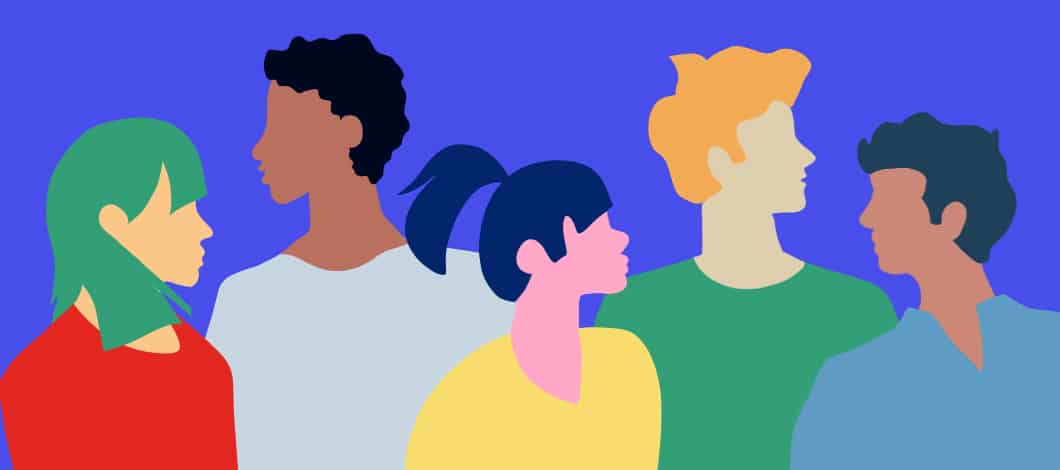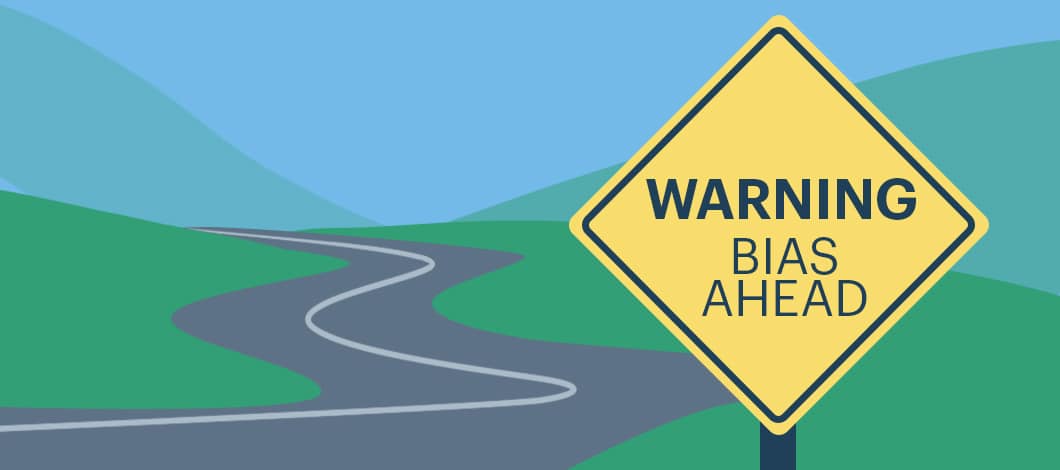Fairness and objectivity are esteemed values in the workplace when hiring and promoting individuals. However, relying on our gut feeling may result in a primal tendency to make unconscious bias in the workplace.
How do you stop yourself from making unfounded assumptions? Learn the causes of unconscious bias and how you can combat it in the workplace.
What Is Unconscious Bias in the Workplace?
Unconscious bias refers to stereotypes or unsupported judgments that we unconsciously may attribute to a person because of their race, gender, physical appearance or background. Despite our attempts to be as objective as possible, our implicit biases may lead us to discriminate or favor individuals unknowingly.
In the workplace, it may impact our decisions about hiring and promotion. When this becomes acceptable behavior, creating an inclusive environment becomes a challenge.
What Is Implicit Bias vs Unconscious Bias?
The 2 most common types of bias are implicit bias and unconscious bias.
Implicit bias or conscious bias is when a person is aware of their negative attitudes. In contrast, implicit bias is when a person is unaware of their biases impact on their perception and decision-making process.
Statista found that 45% of people of color in the technology industry believe unconscious bias plays a significant role in the hiring and interviewing process at their company. In another Statista survey, 44% of respondents reported that unconscious bias among their managers was one of the main barriers to equality in their industry.

What Causes Unconscious Bias in the Workplace?
Bias is a natural tendency. Erik Kandel, a Nobel Prize-winning neurologist who specialized in research on memory, said our brains work unconsciously about 80%-90% of the time.
Our mind instinctively categorizes concepts by instinct. Simply put, building these “mental shortcuts” lets us process information at a faster pace.
Unfortunately, when we interact with people, this habit may lead us to make untrue judgments based on their race, gender, education, physical appearance, income or accent. This habit may result in misunderstandings, or in the worst-case scenario, injustices in the workplace.
What Are the Types of Unconscious Bias in the Workplace?
Being aware of the unintentional biases we make and common unconscious bias examples can help us make better decisions.
Here’s a look at the types of bias and examples:
Affinity Bias
This refers to our tendency to favor individuals who have the same backgrounds, experiences and interests. At work, we may show favoritism toward applicants with similar characteristics and experiences to evaluate culture fit. However, this may contribute to a lack of diversity in your workplace in the long run.
Attribution Bias
This refers to how we perceive others based on previous interactions and observations. While this may seem inoffensive, hiring managers could make false assumptions based on unusual details in a resume, even when they don’t know the full story.
Confirmation Bias
As recruiters, we judge candidates based on irrelevant attributes like their name, country of origin or university. Research by the University of Chicago and the Massachusetts Institute of Technology found that people with white-sounding names got 50% more job interview requests. Because of these preconceived notions, human resource teams may overlook resumes of talented candidates based on their first impression.
Conformity Bias
When hiring teams discuss job applicants, their perception of the candidate may change based on the opinions of other people in the group. Because the opinion of the majority isn’t always correct, they may miss out on hiring excellent candidates.
Gender Bias
This happens when men get preferential treatment in terms of promotions and job applications over their equally qualified female counterparts. In female-dominated industries, the roles may be switched. A study in the IZA Institute of Labor Economics found that women were 24% more likely to permanently lose their job compared with men because of the COVID-19 pandemic.
Ageism
Older people may find it difficult to get a job or switch careers in their 50s. Since businesses favor younger talents, companies may miss out on more experienced senior individuals that have more expertise to get the job done.
Beauty Bias
Individuals with attractive appearances can make us stop and stare. However, it may lead us to overlook less attractive people who are more qualified and competent in doing the work.
Height Bias
Sometimes we may judge people based on whether they are short or tall. In Malcolm Gladwell’s book Blink, he notes 58% of Fortune 500 companies were more than 6 feet tall. Likewise, a study published in the Journal of Applied Psychology found individuals who are 6 feet tall earn $166,000 more during a 30-year career than those who are only 5 feet 5 inches tall.
The Halo Effect
This refers to our tendency to highly regard individuals or place them on a pedestal after learning a particular detail about them. For example, recruiters may choose candidates solely because they graduated from an elite university. But admissions scandals prove that going to a famous school isn’t everything.
The Horns Effect
In contrast to the halo effect, the horn effect may happen when we view individuals in a negative light after hearing details about them. This could be as simple as a quirk during a job interview or an unfounded rumor about them.
Contrast Effect
We compare and contrast individuals all the time, but this is especially true when you’re evaluating the merits of potential candidates. However, pitting candidates against one another may lead to the loss of our credibility. Instead, we should evaluate them based on their individual achievements. For example, candidates interviewed on a recent date may be viewed in a positive light since the meeting was fresh and recent. Hence, you may neglect those interviewed at an earlier date.

How Do You Avoid Unconscious Bias in the Workplace?
Each of these steps will help you make fair judgments about other individuals.
1. Identify Biases Within Your Organization
Unconscious bias can determine the employees who will get a raise or a promotion among others. By identifying where bias is prevalent, human resource teams and managers will be able to make effective strategies to prevent them.
2. Opt for Blind Recruitment
Organizations can opt to remove the name, age and geographic location of candidates. That way, recruiters can make objective decisions and focus on their relevant skills and experiences. You can use recruitment software to conceal sensitive and personal information from managers.
3. Craft Gender-Neutral Job Ads
A job advertisement will determine people’s first impression of the position and their employer. If your copy has biased wording, you may discourage potential applicants from applying for the job.
According to a study by TotalJobs, the most commonly used male-gendered words are lead, analyze, competitive, active and confident. Meanwhile, the most commonly-used female-gendered words include support, responsible, understanding, dependable and committed.
4. Train Employees
Awareness begins with education. Make employees undergo unconscious bias training to foster an inclusive workplace. When employees become more aware of its existence, they’ll be able to recognize their own unconscious biases and make informed decisions.
5. Look at the Data
Look at the numbers and examine which individuals are more likely to get promoted and get a raise. Are they more likely to come from a specific race or gender? Is your upper management composed of individuals from a specific background? Make an active effort to hire individuals with diverse backgrounds in upper management so that everyone is evaluated fairly.
6. Have Diverse Recruiters
Recruit a diversity officer to prevent unconscious bias scenarios from affecting hiring decisions. If not, your recruiters may unknowingly rely on their past biases when evaluating candidates.
7. Improve Communication Within the Organization
Encourage teams to create policies and procedures that ensure all participants will speak up and communicate during meetings. As we get to know the people we work with, we can eliminate preconceived notions we may have about them. Also, widening our social circles will help us eliminate unconscious racial biases and other forms of implicit bias in the workplace.
Develop a Plan to Eliminate Unconscious Bias in the Workplace
Becoming aware of unconscious biases in your workplace is the first step to eliminating them.
You also should make an effort to have recruiters and managers from diverse backgrounds. Train employees so that they become conscious of the biases they make.
Done right, you’ll be able to identify top talent and hire the most qualified people for the job. Thus, you’ll be recruiting high-performing, productive and qualified workers from diverse backgrounds and create an inclusive environment for business growth.










